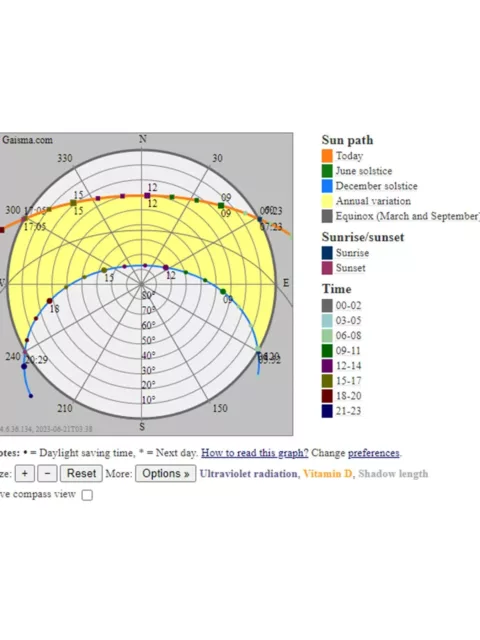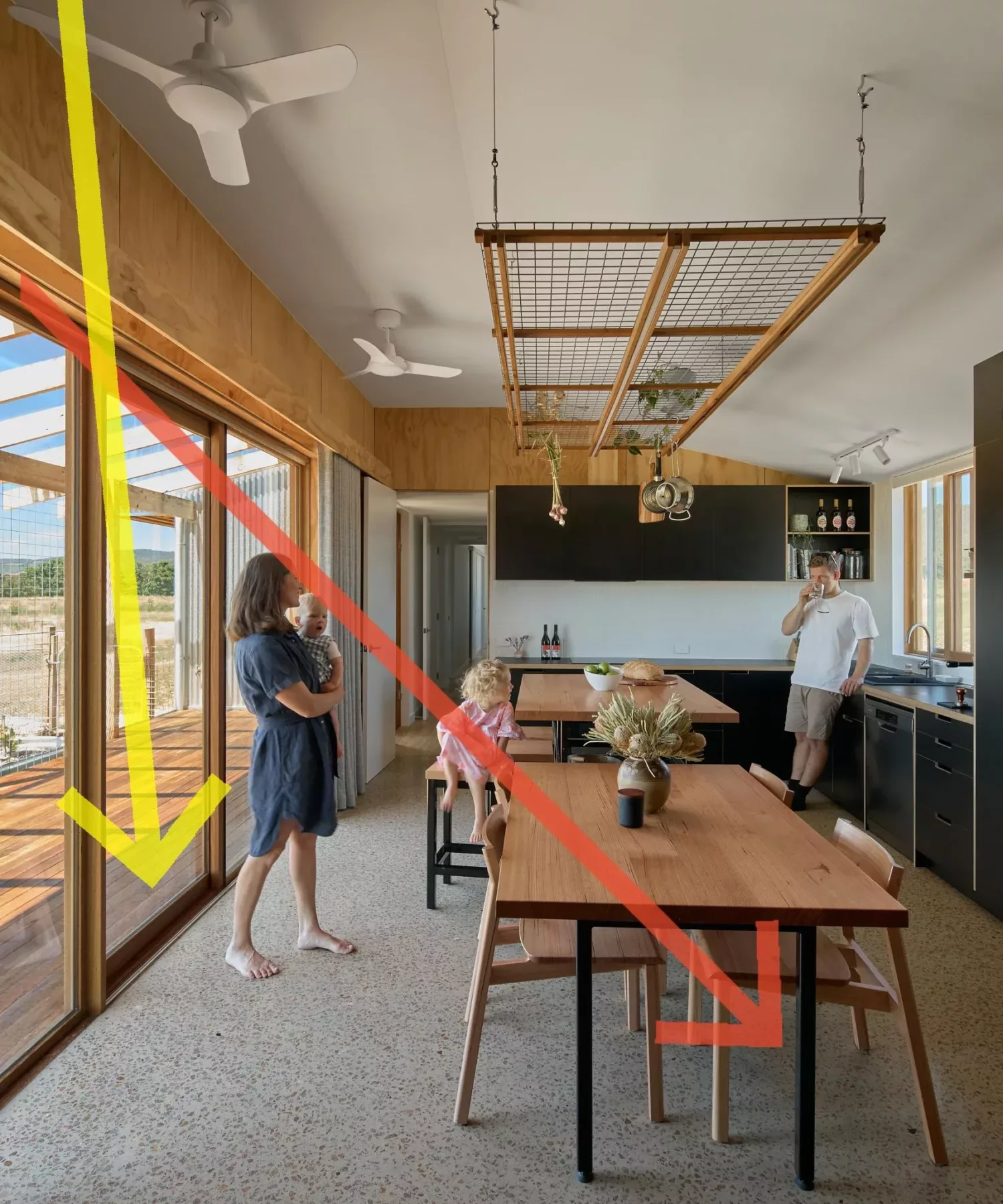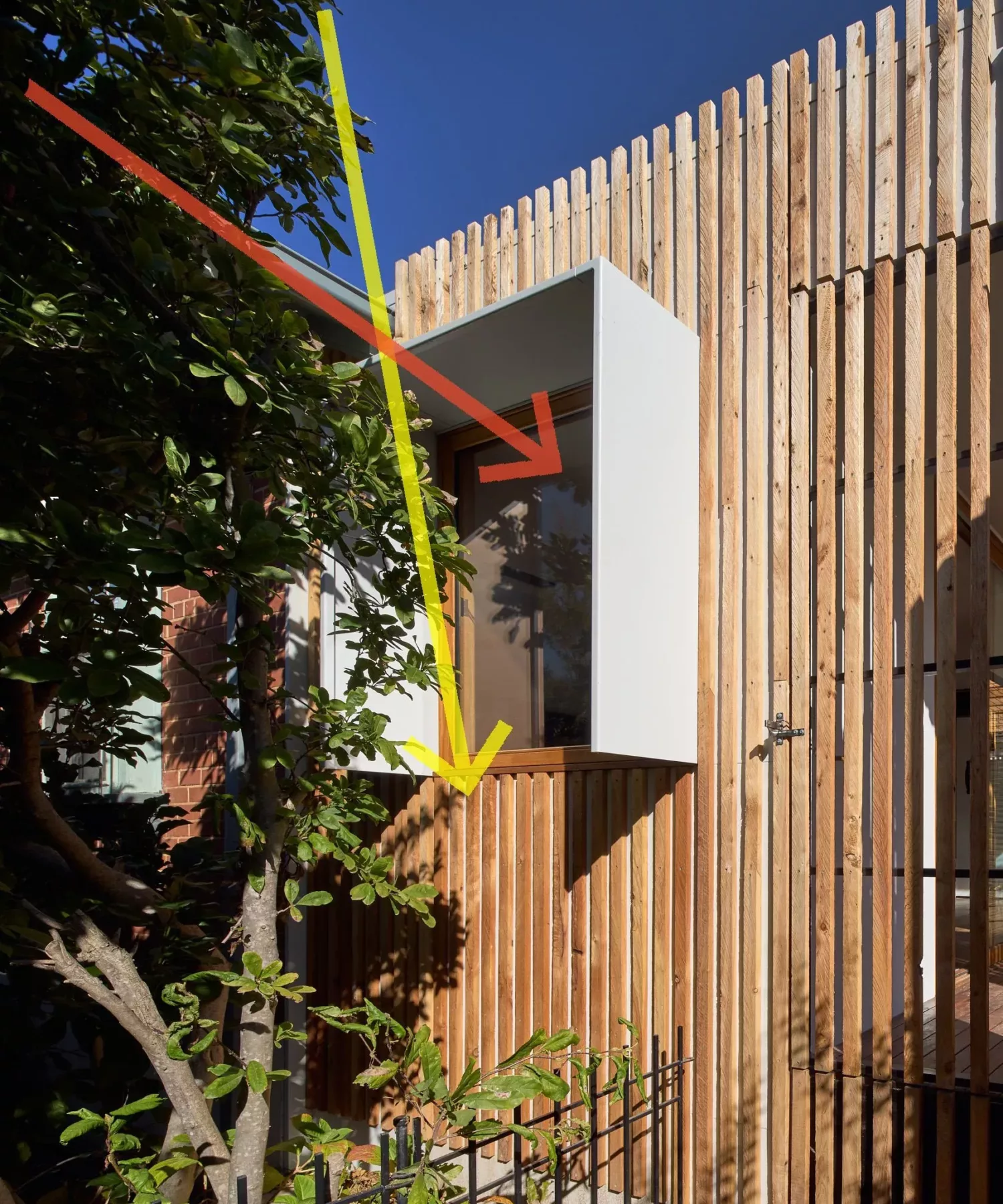
Solar Passive Design and Sun Angles
One of the critical aspects of solar passive design is the ability to understand how the sun moves through the sky, daily and throughout the year.
In the southern hemisphere the sun will spend the majority of its time in the northern parts of the sky. As we are further from the equator here in North East Victoria, it will be significantly lower in the sky during the winter months.
- Proper placement of windows
- Shading devices
- Thermal Mass
Allow us to retain that heat from the sun inside our homes.
Understanding Sun Angles

Here we can see that sun angles throughout the year in Albury-Wodonga.
From the diagram we can see that the short cold days of winter correspond with the sun being much lower in the sky. We can also see that the long hot days of summer have the sun high over head, beating down from almost directly above.
Sun angles for your location can be found at https://www.gaisma.com/
Working with the sun
This variation in sun angles throughout the seasons gives us the opportunity to utilize the heat from the sun in winter to warm our homes. While also using correct shading devices to eliminate that solar radiation from our homes in Summer.
If we have north facing glazing, we can use fixed eaves or awnings to shade our home in summer but allow winter sun under, warming our home.
To the west and east we could utilize deciduous plants or vertical shading devices to eliminate summer morning and afternoon sun.
We can also see from the sun angle diagram that in summer morning and afternoon, the sun hits the home from the south. South facing glazing should be minimized not only to eliminate this unwanted heat in summer but to also minimise losses through the glazing in winter.
At BRD we spend considerable time detailing and documenting correct shading devices to ensure we are effectively control the sun year round. Comprehensive 3D modelling allows us to test to ensure we have the correct shading. Paired with the information from our NatHERS rating consultants we can tailor a passive solar home to your site.


More information at Solar Passive Design
Our favourite resource from understanding all the elements of Solar Passive Design is https://www.yourhome.gov.au/.